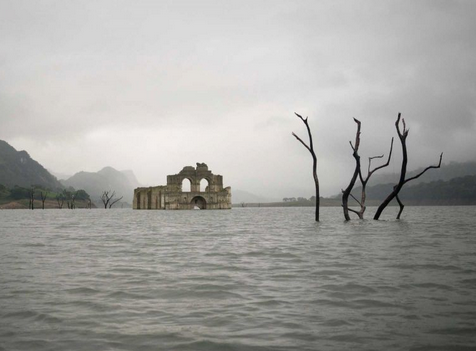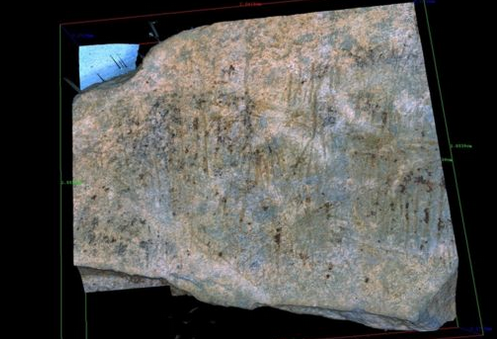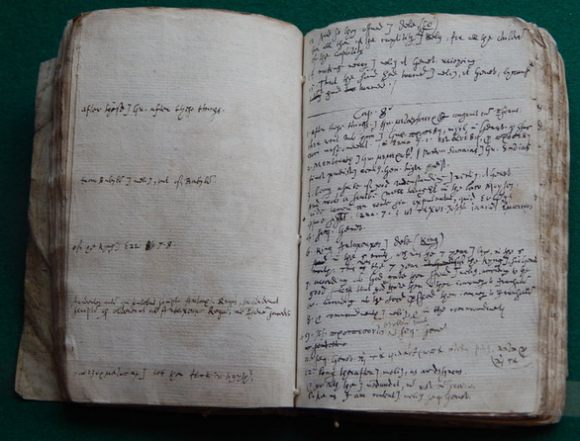From the depths, an old church emerges.
As our waters recede due to drought, strange and beautiful things emerge – as if from a time machine.
Colonial church emerges from receding reservoir in Mexico
SF Gate/Associated Press
“MEXICO CITY — Leonel Mendoza fishes every day in a reservoir surrounded by forest and mountains in the southern Mexico state of Chiapas. But in recent days, he also has been ferrying curious passengers out to see the remains of a colonial-era church that has emerged from the receding waters.
A drought this year has hit the watershed of the Grijalva river, dropping the water level in the Nezahualcoyotl reservoir by 82 feet.
It is the second time a drop in the reservoir has revealed the church since it was flooded when the dam was completed in 1966. In 2002, the water was so low visitors could walk inside the church.
“The people celebrated. They came to eat, to hang out, to do business. I sold them fried fish. They did processions around the church,” Mendoza said.
The church in the Quechula locality was built by a group of monks headed by Friar Bartolome de la Casas, who arrived in the region inhabited by the Zoque people in the mid-16th century…”
For the rest, and a video too, click here.
Share


